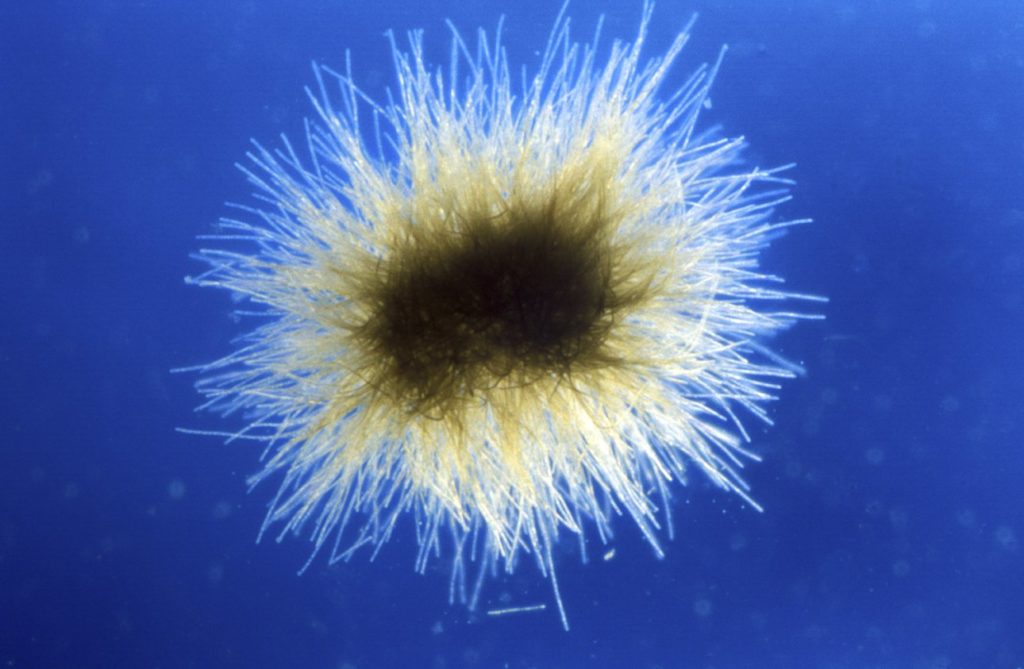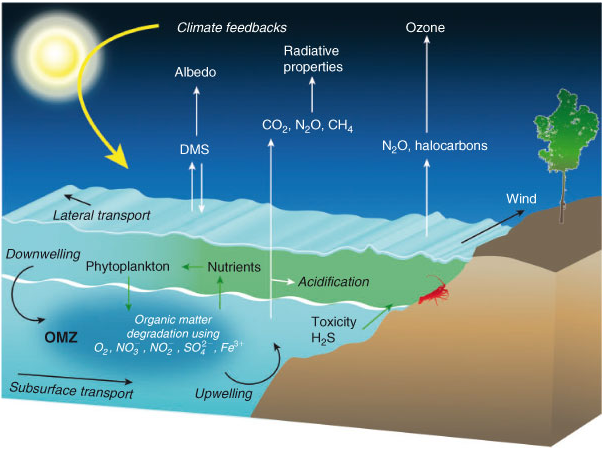Importance of Nutrients
Seawater nutrients play a fundamental role in the growth of phytoplankton populations which form the basis of the oceanic food chain. These dissolved inorganic nutrients, Nitrate, Phosphate and Silicate are vital to the growth of photosynthesising plankton (Jackson & Williams, 1985; Anita, 1991). Silicate is of importance to the group of phytoplankton, Diatoms, where it is required for the growth of their cell wall (Round, Crawford & Mann, 1996).

Close up photo of Cyanobacteria, more colloquially known as blue-green algae, a member of the Phytoplankton family. Phytoplankton consume the dissolved nutrients and CO2 in the water while photosynthesizing to produce oxygen and grow. They are the beginning of the food chain in the ocean.
Quantification of these nutrients forms the foundation for understanding ocean productivity and their measurement can be used to monitor and assess many oceanic cycles. The spatial-temporal scale of monitoring can vary with the nature of the studied processes, and can be seasonal, yearly, or even decadal (Fripiat, 2017; Keller, 2001). These higher-level observations are important in quantifying dynamic oceanographic systems relevant to climate change and ocean biogeochemical fluxes (Moore, 2013). With the climate transitioning into an uncertain period largely from the direct and indirect impacts of human activity (CSIRO & BOM, 2015), it will be imperative to ensure the effects of this are accurately observed and tracked.

Simplified diagram of chemical cycling in the ocean, central to the whole process is the conversion and consumption of the dissolved nutrients.
As many of these nutrient measurements are being used over extremely long-time scales, ensuring the highest accuracy of data is necessary. A level of accuracy and reproducibility is required such that oceanographers and biogeochemists can correctly track and quantify minute changes in the ocean composition. However, it has been shown that many nutrient datasets do not agree, potentially indicating the accuracy of nutrient analysis inadequate (Gouretski & Jancke, 2000). Despite modern analysers implementing many automated functions, improper training or processes can contribute to significant errors (Hydes et al., 2010). These inaccuracies translate to errors of up to 10% for some deep-water nutrient data collected in the last three decades (Tanhua et al., 2009, McGrath et al., 2019).
